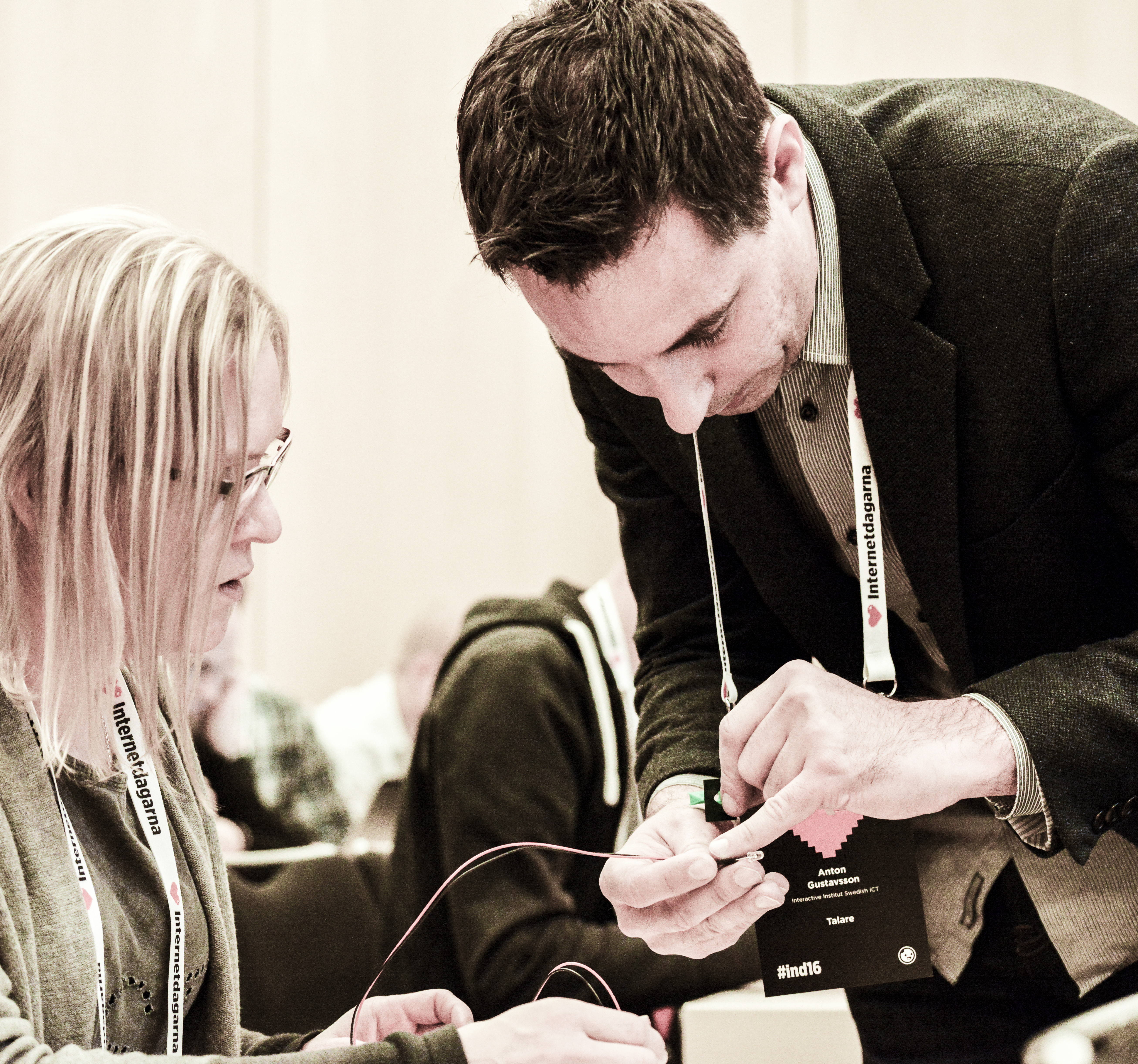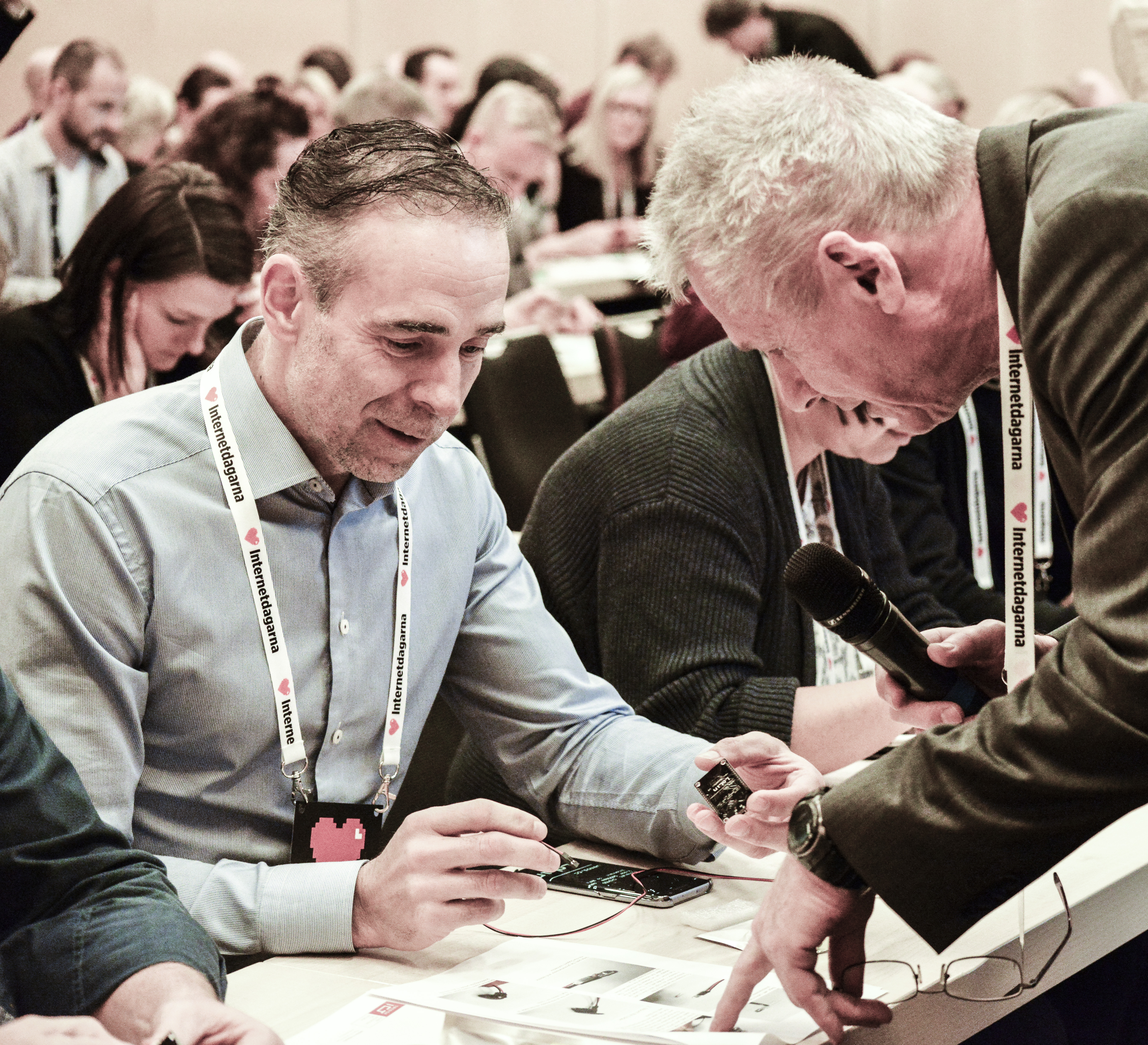Electricity meter monitor WS
The Electricity Meter Monitor workshop was conducted both during Internetdagarna in November 2016 and at Jfokus 2017. This article is a documentation of how these two workshops went and the differences between them.
Internetdagarna
At Internetdagarna 2016, we held a hackathon with as many as 80 people during one hour with the aim of building their own electricity meter monitor (tutorial available here). It was a very ambitious goal of a one hour workshop with a far bigger number of participants than facilitators. Also, the participants' knowledge about micro controllers and IoT varied since the fair is targeting a quite large audience (anyone who works in relation to the internet).
The session
As you can see in the tutorial, the process included both hands-on work by cutting phototransistors and connecting the cables to the transistor and the micro controller as well as some programming and transferring of the code. This is the part that was the most complicated since it had two major drawbacks:
- The folder containing the installing environment (VirtualBox), drivers and all the files to be uploaded to the micro controller was as big as 3 GB. Downloading such a huge amount of data might take a while, which is why we provided USB sticks with the files during the workshop.
- Not all of the participants brought computers with them, which meant that computers had to be shared. Furthermore, the process of downloading, installing and transferring files with the ESPlorer software was long and bumpy, which made people drop out of the workshop.
We also had a few stations where participants could queue up and get their micro controllers flashed and their code uploaded. This was however quite time consuming and inefficient to wait in line since many participants needed this kind of assistance.
 |  |
